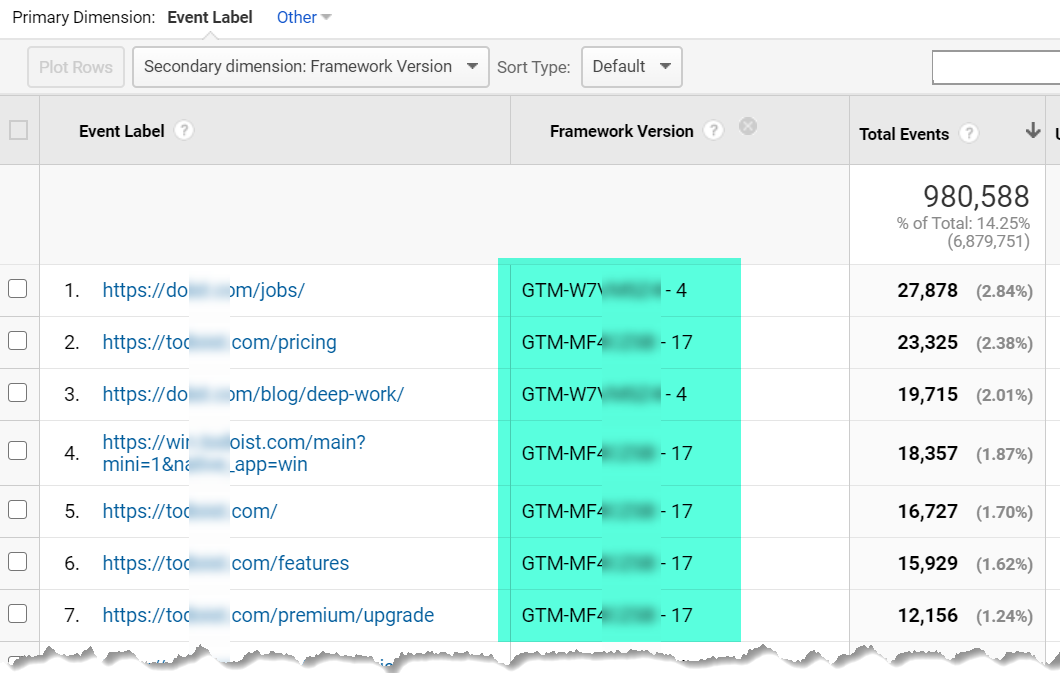Navigating the Midst of Secondary Dimension in Google Analytics: A Thorough Exploration on Its Capability
Additional measurements, though seemingly simple at first look, nurture a wide range of untapped possible waiting to be harnessed. As we begin on this trip to check out the nuanced functionality of additional dimensions, we will certainly reveal exactly how this feature can brighten patterns, reveal correlations, and inevitably lead the way for informed decision-making in the electronic landscape (what is a “secondary dimension” in google analytics?).
Recognizing Second Measurements in Google Analytics

Comprehending how second measurements work is vital for leveraging the complete power of Google Analytics. By incorporating main metrics with second dimensions, you can obtain beneficial understandings that drive informed decision-making and optimization techniques.
Leveraging Additional Measurements for Information Analysis
Building upon the fundamental understanding of exactly how second dimensions enhance data evaluation in Google Analytics, the use of these additional layers of details comes to be vital in extracting beneficial insights for educated decision-making and optimization techniques. By leveraging second measurements, experts can dig much deeper right into the efficiency metrics by adding even more context to the key dimensions, hence discovering concealed patterns and connections that may not be noticeable in the beginning look. This deeper degree of evaluation makes it possible for organizations to much better recognize customer actions, recognize fads, and pinpoint areas for improvement.
Furthermore, secondary dimensions provide an even more extensive sight of the information, permitting segmentation based on various parameters such as demographics, devices, traffic resources, and a lot more. This segmentation assists in a more granular evaluation, making it possible for companies to customize their projects and strategies to details audience sections for improved targeting and customization. Basically, the critical usage of secondary dimensions equips organizations to make data-driven decisions that drive growth and success in the digital landscape.
Advanced Methods for Second Dimension Application
Discovering complex techniques to harness the full capacity of additional dimensions in Google Analytics raises the deepness and sophistication of data analysis for calculated decision-making. One sophisticated strategy for implementing secondary dimensions that site is the use of custom-made dimensions. Furthermore, incorporating secondary measurements with sophisticated sections can offer even a lot more granular insights by applying several layers of segmentation to the data.
Interpreting Insights Via Additional Measurements

When analyzing insights with second dimensions, it is vital to think about the context of the data and exactly how different measurements communicate with each various other. Understanding which click for info specific website traffic resources lead to greater conversion rates or determining which gadgets individuals choose for making acquisitions can give workable insights for optimizing marketing campaigns and improving total internet site performance. By meticulously checking out the information with secondary measurements in mind, businesses can make educated choices that drive meaningful results and boost their digital existence.
Maximizing Performance With Secondary Measurements

One crucial means to maximize performance with secondary measurements is by segmenting information more granularly. This enables you to separate specific elements that may be affecting your metrics and obtain a far better understanding of what drives success or failing in your digital initiatives. By incorporating secondary measurements such as 'gadget classification' and 'landing web page,' you can identify which tool types are most reliable for certain landing pages, enabling you to tailor your methods accordingly.
Furthermore, using secondary dimensions can aid you recognize trends, patterns, and correlations that may not be apparent when assessing data with main measurements alone. This much deeper level of evaluation can result in even more enlightened decision-making and inevitably improve the total efficiency of your web site or digital advertising campaigns.
Verdict
In final thought, additional dimensions in Google Analytics play an important function in enhancing data evaluation and offering much deeper understandings right into website performance. By using advanced strategies and interpreting the data properly, organizations can enhance their techniques and improve total performance. Recognizing the functionality of additional measurements is necessary for making notified decisions and driving success in the electronic landscape.
By leveraging secondary dimensions, experts can dive deeper into the efficiency metrics by including even more context to the key measurements, hence uncovering concealed patterns and correlations that might not be evident at initial look. One innovative why not try this out strategy for executing additional measurements is the use of custom dimensions.Having mastered sophisticated methods like customized dimensions and regex for second measurement application in Google Analytics, the following essential action is analyzing the beneficial insights acquired with these sophisticated information division methods. Translating understandings through secondary dimensions includes analyzing the relationships in between the key and second measurements selected, uncovering patterns, trends, and relationships that might not be right away evident when looking at the information in its totality.When analyzing understandings with secondary dimensions, it is essential to consider the context of the data and just how various measurements engage with each various other.